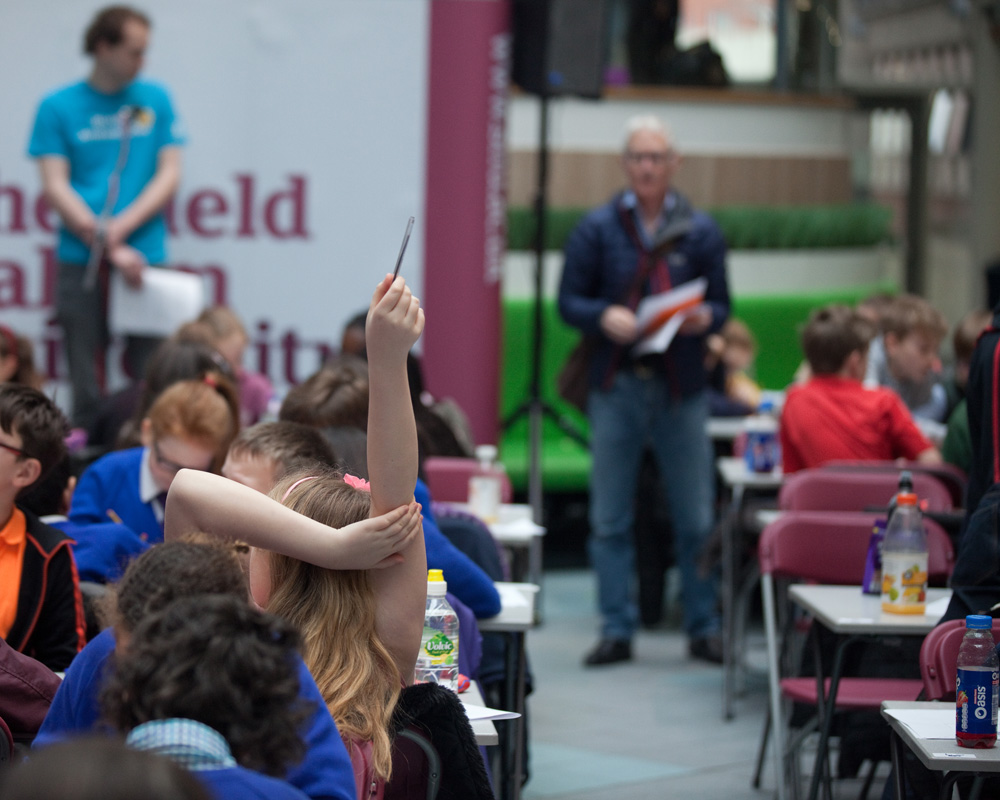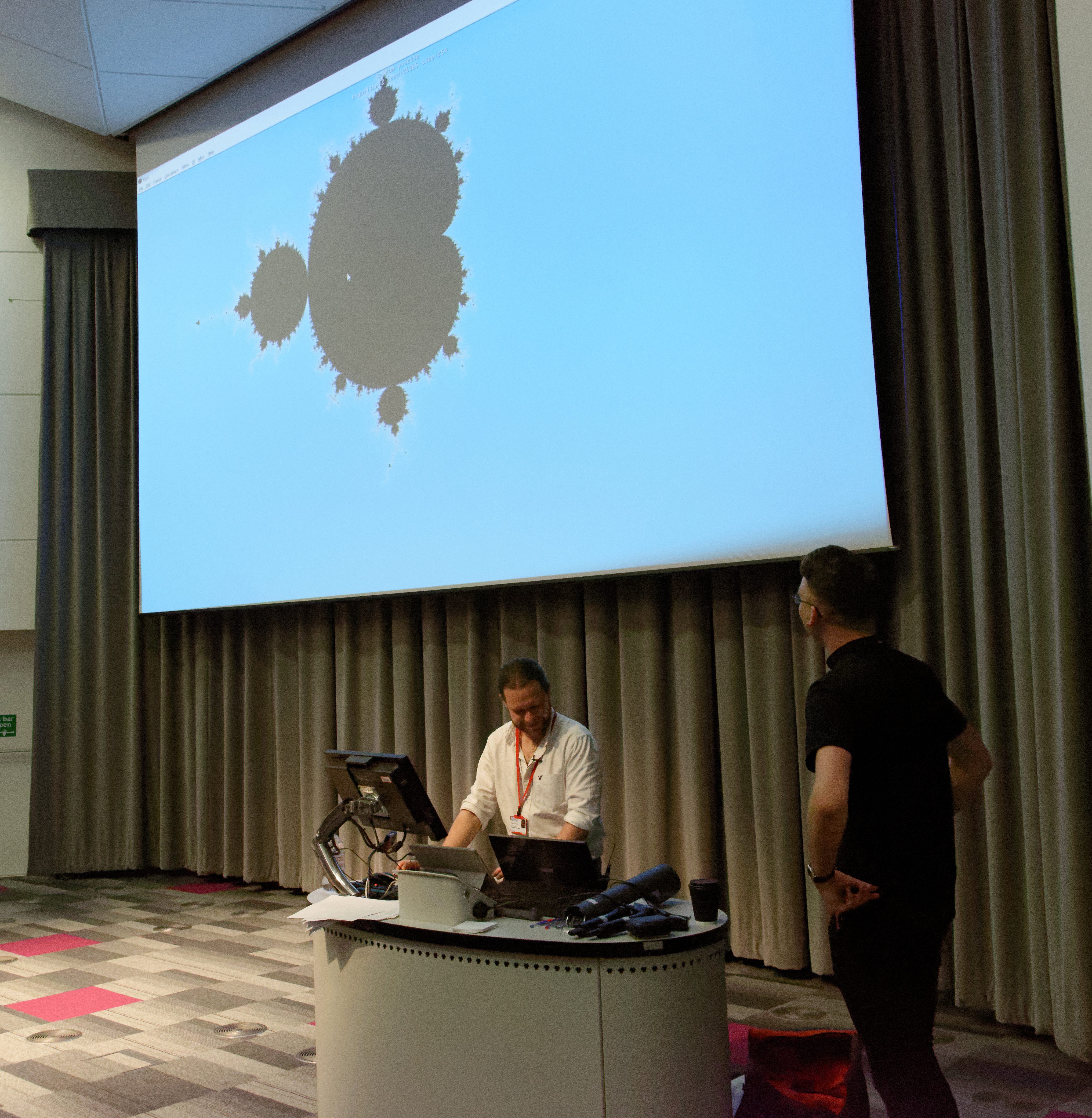Case Study: Pop Maths Quiz
Organisations involved: Sheffield Hallam University
Case study written by: Alex Corner and Jeff Waldock
Intended audience: Years 6 – 13 (Ages 11-18)
Maths content: Curriculum and curriculum-adjacent material for the above school years
Audience group: Lower secondary or Middle school, Upper secondary or High school, Sixth Form or Junior College, Primary or Elementary
Audience interest level: Uninterested, Receptive, Engaged
Topics: general maths, problem solving
Background
The Pop Maths Quiz was conceived as a means of widening the appeal of mathematics to young people, by creating a fun and engaging outreach event, raising their aspirations and potentially boosting applications to study the subject at university. A secondary benefit of holding the event within the University was to give the participants an experience of the university environment, perhaps helping break down the ‘ivory tower’ reputation it may have held for those who may not otherwise have aspired to apply. A third aim was to raise the profile of Mathematics at SHU within the local region.
Implementation

The event was designed in a ‘pub quiz’ style, where 20 mathematical problems, riddles, and puzzles are read aloud to students working together in teams spread across four age ranges: Year 6, Years 7-9, Years 10-11 and Years 12-13. In addition, following the quiz itself, a popularisation ‘lecture’ is given aimed broadly at Y9 students with 400 places available in the University’s large lecture theatre.
Although intended as a ‘fun’ event, teams took the challenge very seriously and there was strong competition to take back the trophy awarded to the winning team. There were some issues with parents and or teachers standing too close to the teams and appearing to offer help, so it became necessary to separate the teams from adults who came with them. Schools wanted to practise quiz questions in advance, so there were many requests for previous years’ questions. To try to preserve the fun element we had a policy of not releasing batches of previous questions, but provided some sample questions on the website. It also became quickly clear that it was of paramount importance to closely check questions for ambiguity, bearing in mind they are read out.
The activity was promoted by email from our events team to schools via existing contacts, and through the event website.
The first event took place 25 years ago in 1997 and it quickly gained in popularity to the point where the capacity of the University accommodation was reached, with upwards of 1000 participants. In recent years unfortunately it has been postponed once due to hazardous weather and twice because of the Covid-19 pandemic.

Accessibility
Accessibility was borne closely in mind when constructing the questions. Schools understand the context of the quiz, but we provide additional readers to repeat questions to teams where necessary. Since the venues were all on campus, physical accessibility issues had been assured.
Evidence and recommendations
Schools, and individual participants, were asked to complete a feedback questionnaire describing what could be improved and what went well at the event. Questions included asking about the event itself, how well the staff and volunteers ran the event, and how engaging the invited speaker was.
The questionnaires often reflected how well the teams did overall in the quiz, with any more negative responses often allowing us to see whether we had unintentionally thrown in too many difficult new questions. Often the teachers would also ask whether they could have old questions to practice with their students – we tended to explain that this wasn’t in the spirit of the Pop Maths Quiz, which was geared towards the enjoyment of mathematics in and of itself rather than winning outright. However, we did acknowledge that offering a prize to the winning teams, as well as the framing of it as a quiz, encouraged the activity to be unavoidably competitive.
A further problem that we eventually ran into was the expectation to invite more well-known popular mathematicians, when in earlier iterations of the event it was more likely for a staff member in the group to deliver the Pop Maths lecture themselves. This led to problems trying to source funding in order to suitably pay the mathematics communicators that we invited.
A further issue was the not inconsiderable time taken to write (and crucially check) the 80 questions (plus tie-breakers) needed. Staff gave their time to do this, but we also liaised with staff running similar events elsewhere to share the load.